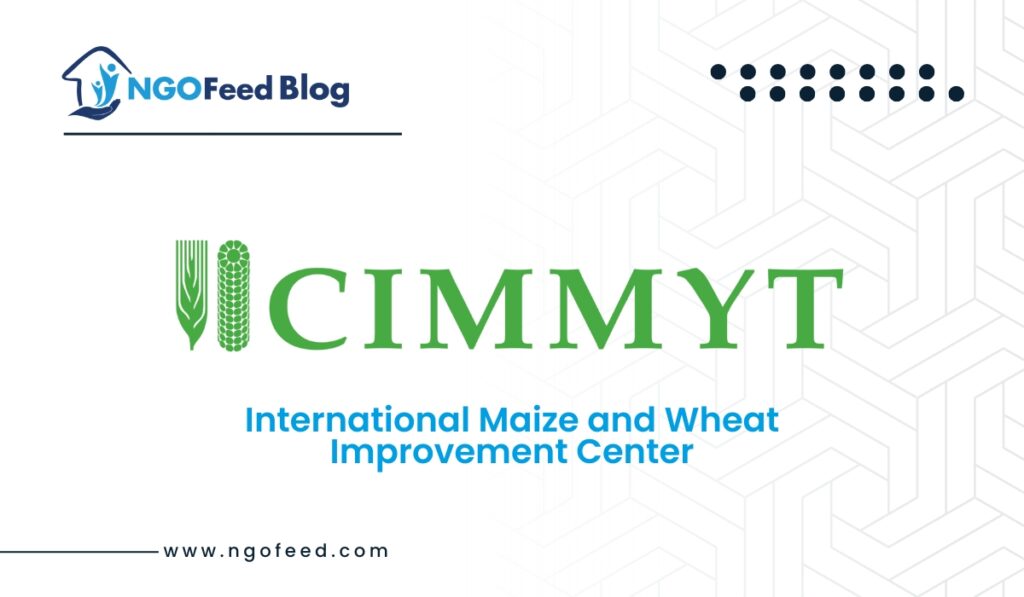CIMMYT Full Form: In the face of a climate catastrophe, the CIMMYT Full form is International Maize and Wheat Improvement Center, which is a global organisation dedicated to non-profit agricultural research and training that equips farmers with the knowledge and tools they need to feed the globe. CIMMYT seeks to create a future with healthier and wealthier people, free from global food crises, and with more resilient agri-food systems by putting top-notch science and solid partnerships to use. The research of CIMMYT improves farmer productivity and income while easing the effects of the climate crisis and lowering agriculture’s environmental impact.
| Index 1 CIMMYT Overview 2 History 3 CIMMYT Objectives 4 Maize and wheat science for improved livelihoods 5 Frequently Asked Questions (FAQs) |
CIMMYT Overview
This section briefly overviews the International Maize and Wheat Improvement Center (CIMMYT). Let’s have a look.
| CIMMYT | International Maize and Wheat Improvement Center |
| Headquarters | State of Mexico |
| Formation | 1971 |
| Managing Director | Martin Kropff |
| Method | Social science research |
| Website | www.cimmyt.org |
| Official languages | English |
History
To increase farm productivity in Mexico, the Mexican government and the Rockefeller Foundation supported a pilot programme that gave birth to CIMMYT. Under Norman E. Borlaug’s scientific direction, the initiative created wheat varieties with better yields, excellent disease resistance, and consistent yields under varying environmental conditions for developing nations.
In the 1950s, these cultivars assisted Mexico in becoming self-sufficient in producing wheat. The same cultivars helped India and Pakistan avoid famine and generate record crops in the 1960s and 1970s. The “Green Revolution” described the broad adoption of better cultivars and farming techniques. In recognition of his contributions to the Green Revolution, Borlaug won the Nobel Peace Prize in 1970 while overseeing CIMMYT’s wheat research.
CIMMYT Objectives
The strategic plan for CIMMYT gives us the direction to carry out our purpose and significantly advance the larger development agenda. Principal objectives:
- Improving the impact of research
- Accelerating genetic progress with new tools and diversity
- Creating and expanding access to types that can withstand stress
- Sustainable intensification for more favourable living conditions
- Enhancing food quality and nutrition
It also marks a shift in our focus from commodity-based research to an integrated approach centring on agri-food systems. This change, we believe, is critical for working more effectively to strengthen food security, reduce poverty and enhance human nutrition.
Read also:
Maize and wheat science for improved livelihoods
A future free from the prospect of a global food crisis, with healthier and wealthier populations, and with more durable agri-food systems is what CIMMYT helps to create.
CIMMYT aims to improve livelihoods via maize and wheat science through an integrated strategy of great science for effect, carried out by partnerships with a heavy emphasis on capacity building. Our integrating philosophy, “ONE CIMMYT,” which ensures that we strive toward the same mission and vision, lies at the heart of this strategy.

Global Impact of CIMMYT
- CIMMYT work primarily benefits low- and middle-income countries, focusing on climate change adaptation and mitigation.
- It generates $3.5-4 billion annually in benefits for farmers and consumers.
- CIMMYT varieties account for 50% of maize and wheat in these countries, offering better performance under adverse conditions.
- Its global seed distribution network provides 80% of breeding lines for maize and wheat worldwide.
- CIMMYT promotes smart farming technologies, enhancing efficiency and reducing greenhouse gas emissions.
- Through extensive training, it empowers agricultural experts and farmers, particularly women, fostering more inclusive decision-making.
Conclusion
In a world where food poverty and climate change are problems, the International Maize and Wheat Improvement Center (CIMMYT) is a bright spot of hope. For many years, CIMMYT has been doing amazing study in agriculture. They are still coming up with new ideas by using top-notch science and smart partnerships to help people around the world make better living conditions and ensure food security. CIMMYT is very important for making sure that communities can thrive in the future, even when things are hard. They do this by focusing on areas like increasing food production, making communities more resistant to natural stresses, and encouraging sustainable farming practices. CIMMYT works to make the world more fair, adaptable, and food-secure by promoting science, and teamwork, and giving people real power.
Frequently Asked Questions (FAQs)
What is the Full Form of CIMMYT?
The Full Form of CIMMYT is the International Maize and Wheat Improvement Center.
When CIMMYT is established?
It was officially formed in 1971.
What is the main purpose of CIMMYT?
The main purpose is to create more dependable wheat and maize cultivars and environmentally friendly farming techniques to improve global poverty.
Who is the Director General of CIMMYT?
Martin Kropff is the Director General of CIMMYT.
Read also:

